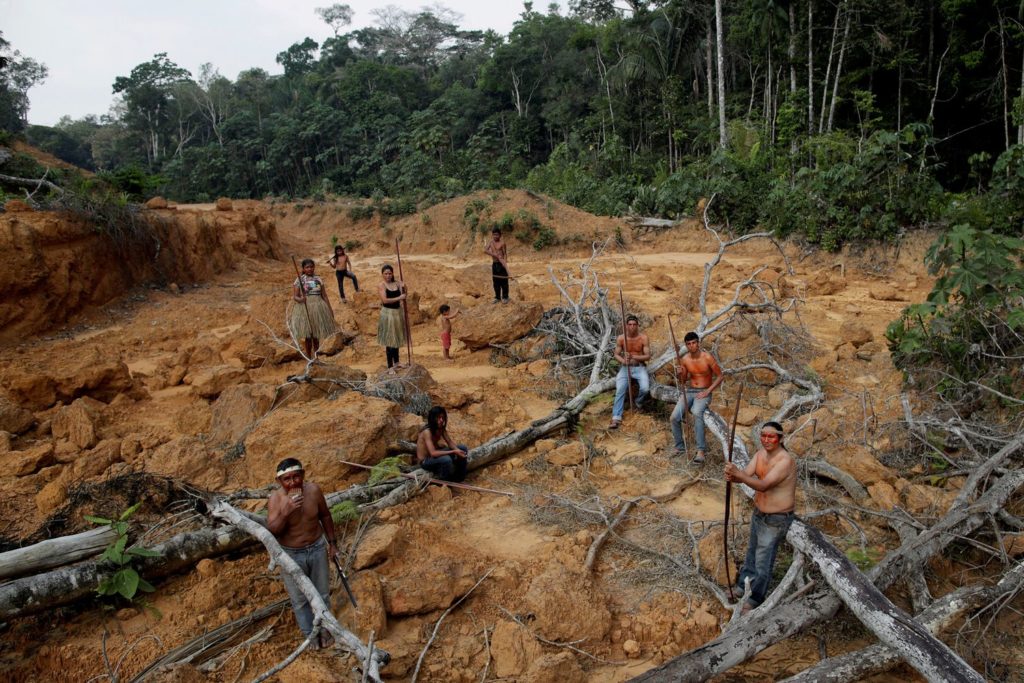RIO DE JANEIRO, BRAZIL – In 1965, the year the current World Health Organization Director-General Tedros Adhanom was born, the world’s population was 3.32 billion. Of this total, over 35 percent were starving. During Adhanom’s lifetime, the planet reached 7.8 billion people, multiplying by more than twice its population, while the proportion of the starving dropped to less than 15 percent.
This achievement had its costs. The transformation of millions of acres of wilderness into farmland also made it more likely that new diseases would spread to humans. A Brown University study estimated that between 1980 and 2010 the number of epidemic outbreaks of infectious diseases tripled. Another study found a link between the use of new land and the emergence of diseases such as West Nile fever and Chagas disease.
It is not yet clear whether this increased risk of animal pathogens spreading to humans is due to widespread ecological changes related to human activity or to specific situations related to certain diseases in particular contexts.

In an attempt to understand how these interactions work, a team led by University College London (UCL) compiled information from 184 studies, which allowed them to analyze 6,801 ecological groups with over 7,000 species, of which 376 contain pathogens that can also infect humans.
Their findings, published on Wednesday in Nature magazine, show that when the land is transformed for cultivation, species that are more hospitable to microorganisms that can cause diseases in people are favored.
Given the premise that the virus causing the next major pandemic lies within some exotic species like the pangolin, in a remote jungle, the researchers show that the danger lies precisely in locations where the natural surroundings have been transformed into farmland and in cities and in animals that benefit from such changes.
Human growth reduces biodiversity and the species that thrive on it, such as rats, starlings, and some bat species, are also the best hosts for the pathogens that can infect humans. This is further aggravated by the fact that other animals, which these microbes do not infect or do so with greater difficulty, are disappearing, which represents a barrier to their progression.
Recent studies have found a link between biodiversity loss and increased disease transmission. In the US, a strong correlation has been found between low diversity in birds in a region, and an increased risk of encephalitis caused by the West Nile virus. This is due to the fact that these low diversity environments are dominated by species that enhance the spread of the virus and do not include other birds that are not such good hosts.
However, the authors clarify that the emergence and spread of new diseases are complex issues. “Our results show that different host species and different types of diseases can react differently to the same environmental pressures,” says Rory Gibb, a researcher at UCL and the main author of the study.
“For instance, the risks associated with primate diseases may be higher in the vicinity of forests, where people have more direct contact with them, but lower in farming environments, where rodent-borne diseases may pose a higher risk,” she explains.
One of the questions that remain unanswered is why the winning species of human irruption and their appetite for farmland and urban development are better hosts to pathogens, both those that infect humans and those that do not. As a proposal, the authors point out that the features that make some rodents and birds adaptable to human changes, such as a fast and prolific life cycle, are related to their investment in an immune system more tolerant of the presence of microbes.
In the specific case of Covid-19, the authors concede that there is no evidence that land use has any influence on its emergence, but this does not imply that it has not occurred in past epidemics and could occur in the future. In coming years, population will continue to grow, and with it the need to transform land and the risk of viruses passing from animals to humans. Gibb and his colleagues recognize this need and propose to focus on some controllable factors.
“These factors are typically socio-economic and involve ways of securing livelihoods, housing quality, access to clean water and sanitation, and access to healthcare,” says Gibb. “It is always possible to reduce these risks by improving access to health and investing in quality housing and good infrastructure,” he concludes.
In an article published in Science magazine on July 24th along with Andrew Dobson of Princeton University (US) as lead author, an effort of US$20-30 billion (R$106-160 billion) annually was proposed to prevent deforestation and regulate wildlife commerce as a strategy to reduce the likelihood of new pandemics.
Every year, two new viruses that once only infected animals are passed on to humans. According to the authors, these control measures, in addition to providing benefits to the planet’s ecosystems and to the human populations that live in the regions where deforestation is most accelerated, can reduce the probability of viral transmissions occurring.
Source: El País

